Are you ready to experience the rush of riding the waves? As a beginner, starting out in the world of surfing can be daunting. But don’t worry! With the right guidance and tips, you can progress faster than you ever thought possible. Here are 31 detailed surfing tips for beginners designed to help you improve your skills and enjoy riding the waves more effectively.
1. Surf at a Beginner-Friendly Spot
Every beach is unique, with a slightly different coastline angle and varying ocean floor formations. The sandbanks at beach breaks change daily; some spots have barreling waves, while others are more sheltered. If you’re a beginner, finding a beach with small but powerful waves or waves breaking further out and rolling in as whitewash is best. Look for beaches with low currents since you’ll struggle to stay in the water less. You can find this information on apps and websites like Windy, Magic Seaweed, or local surf guides. These are some of the surfing tips you should keep in mind.
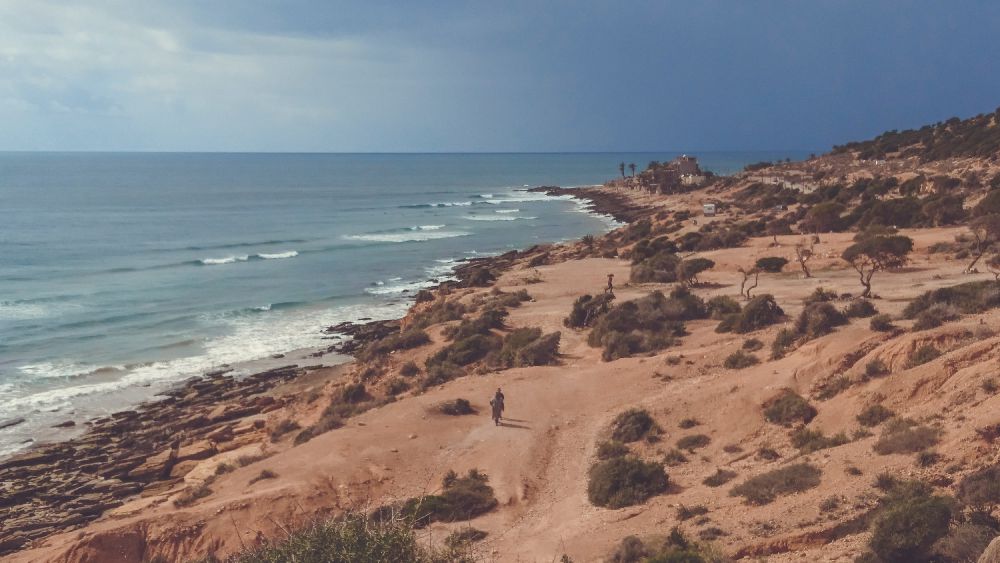
Seek out beaches with gentle, rolling waves that are forgiving for beginners. These spots are usually populated with other beginner surfers, making it a supportive and less intimidating environment. Avoid areas with powerful, dumpy waves, as these are more suitable for advanced surfers.
2. Use a Big Surfboard
Among the surfing tips and tricks for beginners, a key advice is to avoid rushing into using smaller surfboards. While sleek, professional boards are tempting, it’s crucial for beginners to focus on skill development with appropriately sized equipment before transitioning to smaller boards.
Because the bigger and more buoyant your surfboard is, the more waves you’ll catch. And the more waves you catch, the more chances you get to practice and refine your technique, which leads to faster improvement. If you use a board that’s too small, you’ll have a hard time catching waves, getting up, and practicing, which leaves no room for progress. Don’t switch to a smaller board until the right time.
3. Get a Soft-Top Board
As a beginner in surfing, it’s important to prioritize safety. One useful tip is to use a soft-top board because it greatly reduces the risk of injuries. Soft-top boards are made with a foam deck, which makes them more forgiving if you collide with the board during a wipeout. They also provide better stability, making it easier for you to balance and progress in your surfing journey. Remember to consider using a soft-top board to make your surfing experience safer and more enjoyable!
4. Spend Time on Dry Land First
It is strongly advised to practice your pop-up on land before attempting it in the waves. You can practice on the beach or any other suitable surface, like a yoga mat. Practicing your popup on land can significantly improve your surfing performance. It is recommended to practice even if you have surfed before. Filming yourself while practicing can help you identify areas that need improvement.
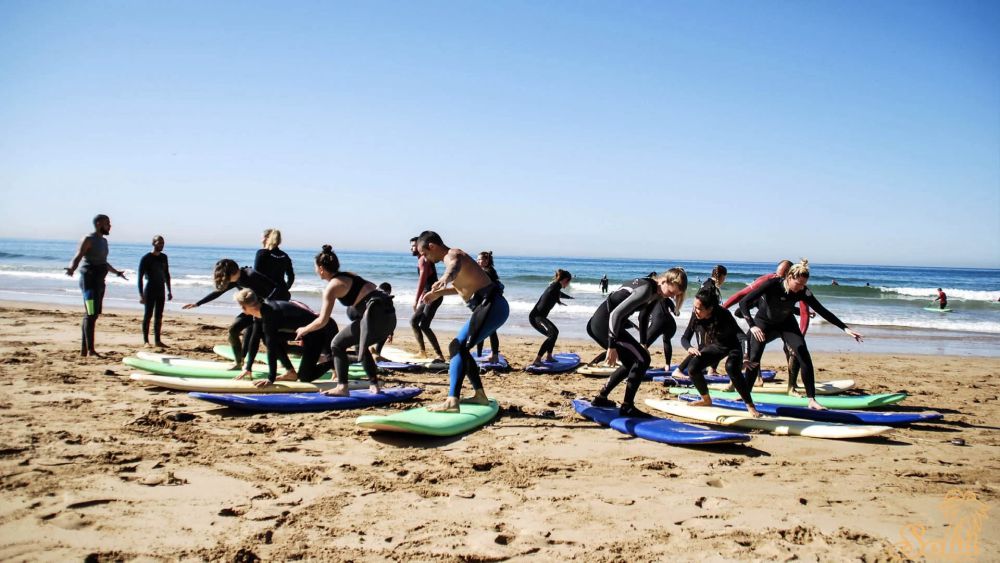
5. Pace Yourself
Surfing is physically demanding, and it’s important not to rush into the water. Start with some gentle warm-up exercises to prepare your body for the physical demands of surfing. Rushing can lead to fatigue and increase the risk of injuries, so take your time and build up your energy for a more enjoyable session.
The pop-up or take-off maneuver is an essential surfing tip for beginners, a fundamental technique not limited to beginners. Even professional surfers are continuously refining this skill to achieve perfection. This maneuver is similar to the sun salutation in yoga, which is practiced by both novices and experts alike. The ultimate goal is to reach a level of mastery where you can execute the move effortlessly, allowing you to focus entirely on riding the wave confidently.
6. Keep Distance from Experienced Surfers
Respect the space of more experienced surfers in the lineup is one of the tips to surfing. Avoid getting in their way or dropping in on their waves. Surfing etiquette dictates that the surfer closest to the breaking wave has the right of way. Wait your turn and ensure the safety of both yourself and others in the water.
7. Get Comfortable Sitting on the Board
Before you start catching waves, practice sitting on your surfboard in the water. Find a comfortable sitting position that allows you to maintain balance without tipping over. This will come in handy when you need to rest or wait for the right wave.
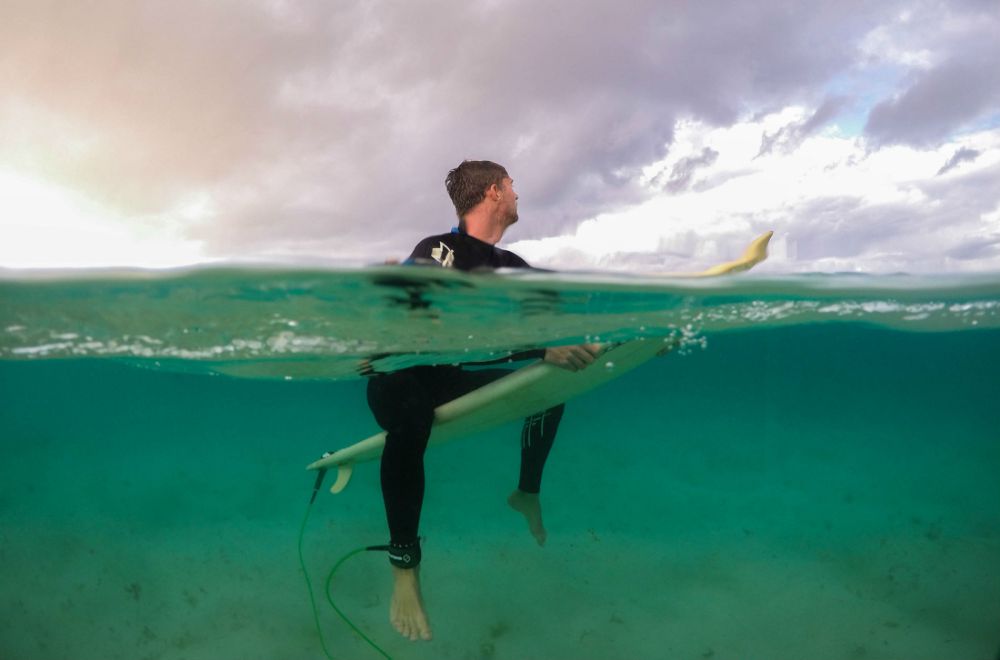
Besides, to catch a wave, it’s important to sit on your board in a way that allows you to react quickly when you spot a suitable one. Finding your balance, then you can practice transitioning from a sitting position to a laying position and figure out which side is best for you to look back and check for an incoming wave.
8. Paddle Effectively
Mastering the skill of surfing paddling is absolutely essential for any surfer. To catch more waves and save your energy, practice finding a strong rhythm and maintaining it as you paddle out into the lineup. With consistent practice, you will develop a powerful and efficient paddle that will help you ride the waves with confidence and ease. So, don’t hesitate to work hard and strive for excellence in your paddling technique!
9. Get Used to Wiping Out
When falling off your board, there are proper surf tips to ensure your safety. It may seem like people simply give up when wiping out, but falling correctly can help reduce the risk of injury from hitting the ocean floor. By practicing falling into shallow water regularly, you can protect your head and your body.
Surfing is for everyone, so don’t worry about taking your time to learn. Watching the water is included in valuable beginner tips for surfing that can help you surf smarter and safer. Just enjoy!
10. Watch the Water
At first, understanding the ocean’s movements while surfing can be challenging. But the more time you spend in the water, the more you’ll understand the patterns and rhythms of the waves. This understanding will help you predict where waves will break. It might take a while, but you’ll get better at reading the ocean and positioning yourself correctly with practice.
For example, the moon influences the ocean’s tides, causing high and low tides. These tides affect where waves break over the ocean floor. During low tide, waves break further from the shore; during high tide, they break closer. To enhance your surfing experience, you should find out the optimal tide level for your chosen surfing spot, which are valuable beginner tips for surfing that can help you surf smarter and safer.
11. Practice Paddling
To catch waves while surfing, having a good paddling technique is not just important; it’s crucial. Regularly working on your paddling skills will help you discover the most effective paddling rhythm that allows you to cover the most distance with each stroke.
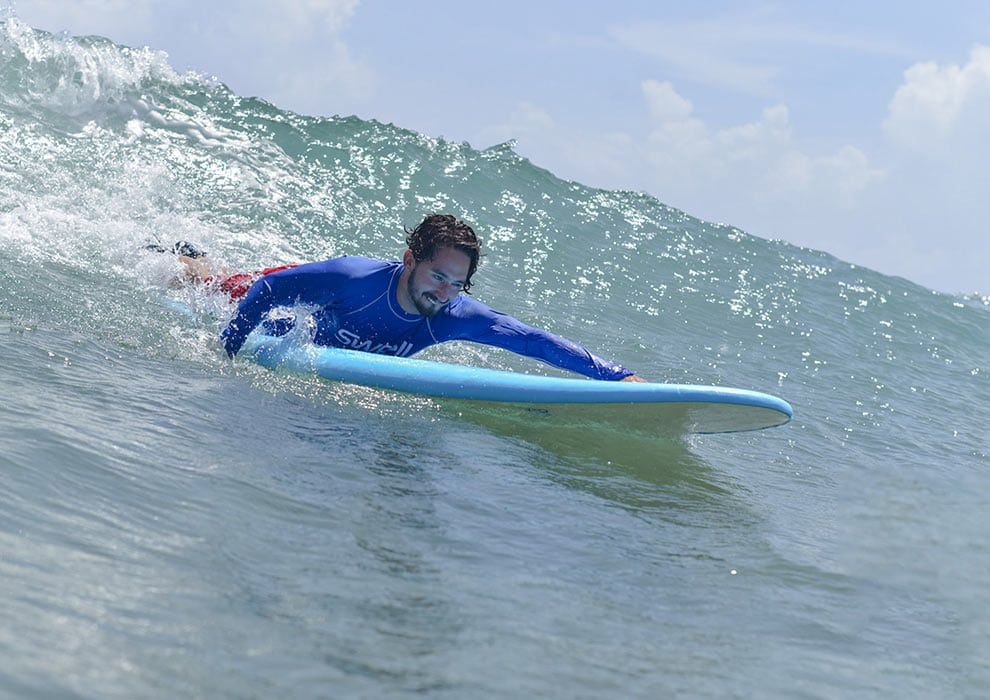
Incorporating specific exercises for surfing paddling into your routine can significantly enhance this aspect of your surfing. Exercises such as swimming laps to build endurance, practicing pop-ups on land to improve agility, and using a rowing machine to strengthen paddling muscles, all contribute to a more powerful and efficient paddling technique.
With efficient paddling, you’ll catch more waves and conserve your energy for longer surfing sessions. So, find the best paddling rhythm and practice it regularly, along with targeted exercises for surfing paddling, and you’ll surely improve your surfing skills quickly.
12. Find the Paddling Sweet Spot
When surfing, it’s important to experiment with your positioning on the board to find the best spot for paddling. Paddling too far forward or back can throw off your balance and make it harder to catch waves. Take some time to practice finding the “sweet spot” where your board glides smoothly through the water.
13. Master Prone Position
When you surf, lying on your board with your chest up, your hands flat on the board, your elbows tucked in, and your feet together is known as the prone position. To maintain balance in this position, you need to find the “sweet spot” on your board, which is neither too far forward nor too far back. These beginner tips for surfing will prevent the board from nosediving or sinking in the water. It’s also important to keep your head up and look forward, not down at the board. Doing so will help you spot the waves and prepare for the popup. Regular practice on dry land and in the water can improve your balance, stability, and wave-catching ability.
14. Master the Popup
One of the most important skills in surfing is the popup, which is the transition from lying on your board to standing up and riding the wave. This allows you to catch more waves and ride them longer.
To pop up on a surfboard, position yourself right. Lie on the board with feet together and toes over the tail. Chest up, hands flat, elbows in, look forward.
When a wave approaches, you must paddle hard to match its speed. As the wave lifts you up, you must quickly push yourself up with your arms and bring your feet under your body. Speed and timing are key; move quickly and catch the wave as it starts to break.
15. Start Small
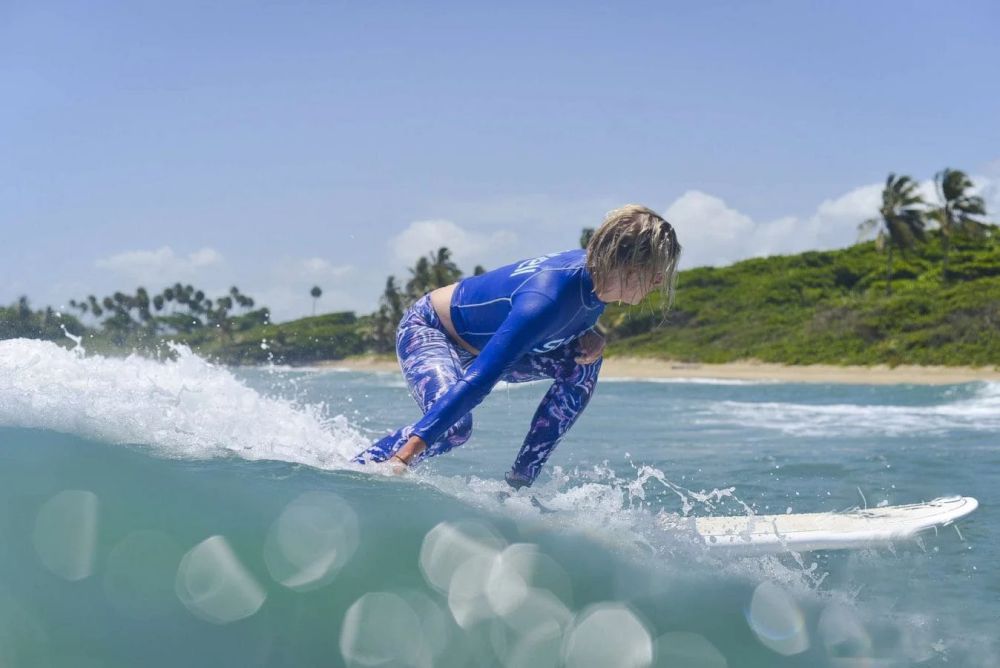
As you seek surfing tips for beginners, starting with smaller waves before moving on to bigger ones is advisable. This approach will help you gain confidence and enhance your skills gradually. Starting with smaller waves is less daunting and more manageable, allowing you to build your confidence and skills gradually. Once you feel comfortable with smaller waves, you can gradually progress to larger ones.
16. Avoid Nosediving
To prevent nosediving, which is a common mistake made by beginners where the front of your board digs into the water, and you somersault off, you need to find the sweet spot on the board. This spot usually involves positioning yourself in the middle of the board where your weight is evenly distributed. Keeping your weight centered on the board will help you maintain balance and prevent nosedives.
17. Feet Positioning
For valuable surfing tips for beginners, maintaining balance and control on the board is essential. A surefire way to achieve this is to keep your feet close to or on the board’s stringer. This position provides superior stability and control, allowing you to ride the waves with ease and assurance. Remember, the stringer is the board’s center line, so positioning your feet in this area is critical to maintaining your balance. Keep your feet near the stringer at all times, and with practice, you’ll become an expert at riding the waves like a pro!
18. Proper Surf Stance
To achieve a proper surf stance, you should position your front foot at a 45-degree angle while your back foot should be almost perpendicular to the tail of your board. This stance will give you stability and control while surfing. Keep your arms relaxed throughout the surfing session. Also, make sure to turn your back knee in for better balance.
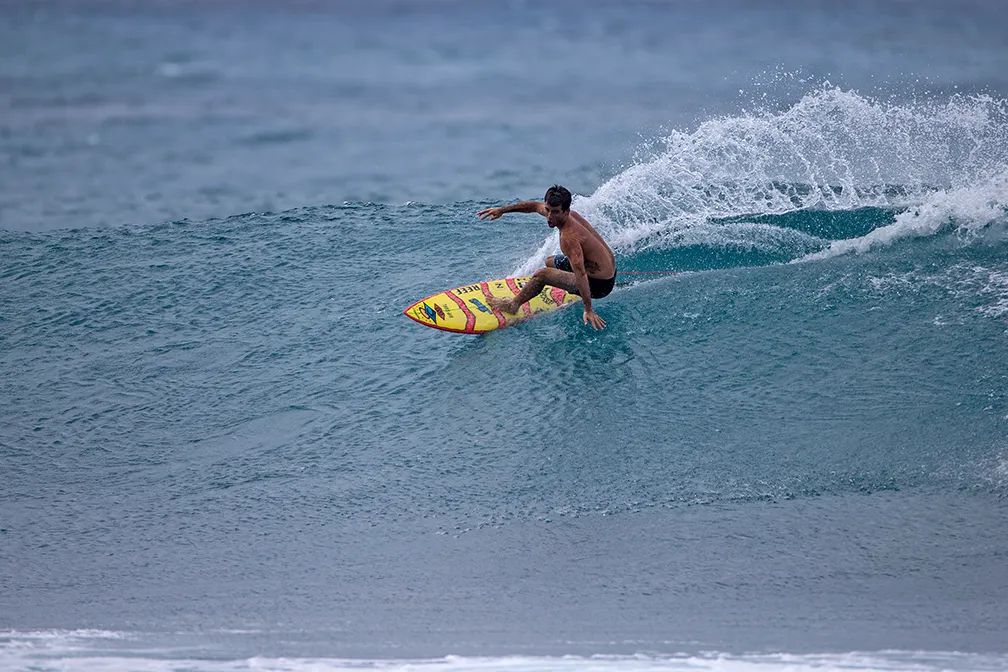
19. Bend Your Knees
Keeping your knees bent while riding a wave is essential to improve your stability. This technique will give you more control and help you learn turns and other maneuvers. By lowering your center of gravity, you can absorb the motion of the waves and maintain control, even in choppy conditions.
20. Angle Your Takeoff
One of the most important aspects of surfing is the takeoff, which is the moment when you stand up on your board and start riding the wave. To master the takeoff, you need to angle your board slightly toward the wave. Angling your takeoff also allows you to perform turns and maneuvers more easily.
To angle your takeoff, you must look at the wave and decide which way to go. Then, you need to position your body and paddle accordingly. As the wave lifts you up, you need to pop up quickly and turn your board with your feet and hips. These surfing tips will help you catch the wave faster, avoid nosediving, and ride along the wave’s face.
21. Stretch Before and After
Many European countries have warm air and cool water temperatures, so preparing your body for the change is important. Surfing requires tons of repetitive motions like paddling and popping up, which can lead to strains or injuries if your body is not properly warmed up.
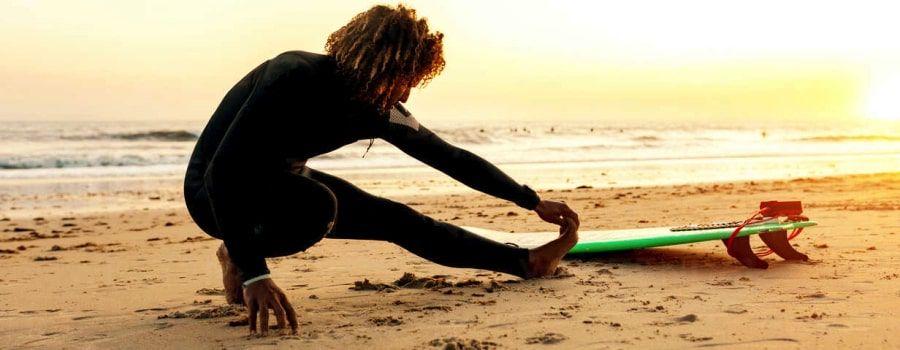
You can bring your heart rate up with a few cardio exercises, such as 5 minutes of jumping jacks and push-ups on the beach before paddling out, and don’t forget to stretch your arms, back, shoulders, and legs.
Not only does it free your body to move in the ways you want it to on the wave, but it also dramatically reduces your chances of injury. Tearing a muscle on the first day of your surf vacation can be very painful and ruin your trip.
22. Keep Eyes on Incoming Waves
For those looking for surfing tips for beginners, keeping a watchful eye on the water is crucial. You can anticipate the waves’ size, shape, and direction and choose the best ones to catch. You can also avoid dangerous situations like getting caught inside or colliding with other surfers.
You should also learn to read the waves and understand their patterns and behaviors. For example, you should know how to spot the peak of the wave, which is the highest point where it starts to break. This is where you want to position yourself to catch the wave.
You can improve your timing, positioning, and wave selection by keeping your eyes on the incoming waves. This will help you catch more waves and have more fun in the water.
23. Choose Waves Carefully
Selecting the right wave to catch is a skill that comes with experience. Look for waves that are peaking directly behind you, as they are easier to catch. Reading the waves and making strategic choices will improve your chances of successful rides.
24. Paddle Three More Times
A useful surfing tip for beginners is to paddle three additional times after catching a wave before standing up. This means when you think you’ve caught a wave, paddle three more times before attempting to stand up. This extra effort ensures that you are in the ideal position to ride the wave, helping you catch more waves and improve your timing. This is one of the most useful surfing tips for beginners that can make a big difference in your surfing performance.
25. Spread Out Your Weight
Have you ever experienced abruptly stopping while riding a wave? This could be because of your surfing stance and weight distribution on the board. If you put too much of your weight towards the back, it can cause the board to slow down and stop. To prevent this, you should distribute your weight evenly across the board. Doing so will help it plane over the surface rather than bogging down.
Consider this analogy: when you’re lying on a surfboard and riding a wave toward the beach, you can easily land it on the sand without falling off. This is because your weight is evenly spread across the board, giving it balance and stability. Apply this same concept when standing up on the surfboard. You can maintain balance and avoid falling off by distributing your weight evenly.
26. Be Friendly and Considerate
Surfing is not only about riding waves but also about sharing the ocean with fellow surfers. Be friendly, courteous, and considerate to other surfers in the lineup. Respect their space and always follow the unwritten rules of surfing etiquette.
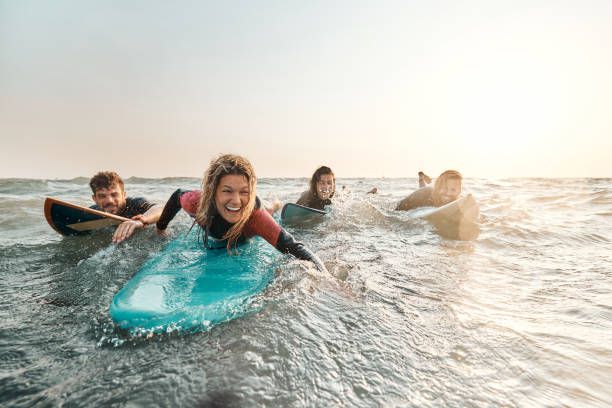
27. Apologize for Mistakes
Mistakes happen, especially when you’re learning to surf. Don’t hesitate to apologize if you unintentionally drop in on someone or make a mistake in the water. Acknowledging your errors and showing humility go a long way in maintaining a positive atmosphere in the lineup. Apologizing for mistakes is a simple but effective surfing tip for beginners that can help you avoid conflicts and earn respect from other surfers.
28. Be Forgiving
Just as you should be forgiving of your own mistakes, be patient and forgiving toward other surfers. Everyone has been a beginner at some point, and learning to surf can be challenging. Avoid getting angry or confrontational with others over small errors.
29. Respect Local Surfers
When surfing at a new spot, it’s important to acknowledge and show respect to the local surfers who are familiar with the break. They often have priority in the lineup and can provide valuable insights into local conditions and etiquette. Respecting local surfers is a crucial surfing tip for beginners that can help you avoid trouble and learn from the experts.
30. Avoid Standing on Knees
Beginner surfers often stand up on their knees instead of popping up to their feet, which is a bad habit that can hinder their progress and limit their balance and control on the board.
Instead, transition directly from lying on your board to standing up position in one smooth motion without touching your knees on the board. This will make your popup quicker and smoother. You will also have more control and stability on your board.
Use a soft-top board or longboard to improve your surfing skills and practice on sand or flat water. Strengthen the core and upper body with push-ups, planks, and burpees.
31. Safety Tips
Always prioritize surf safety. Wear a leash to prevent your board from getting away from you in the water. Additionally, avoid diving headfirst in shallow water to prevent serious injuries. Be mindful of your surroundings and potential hazards in the ocean.
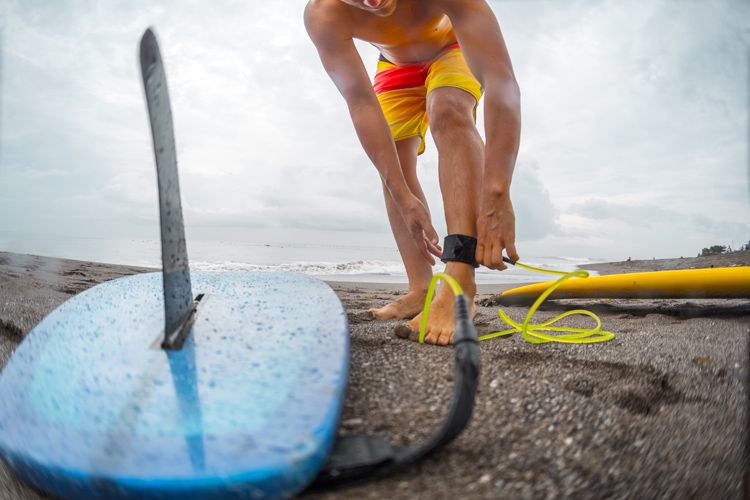
Final Thoughts on Surfing Tips for Beginners
Surfing is a challenging but rewarding sport. With these surfing tips for beginners, you’ll be well on your way to becoming a confident and skilled surfer.
To further enhance your surfing experience, especially as a beginner, consider the innovative Boost Fin. This tool is designed to give your surfing a significant advantage. The Boost Fin is a unique accessory that attaches to your surfboard, offering additional propulsion in the water. This extra push can be incredibly beneficial for beginners who are still mastering paddling techniques and wave catching.
With Boost Fin, you can:
- Improve Paddling Efficiency: It helps in conserving energy while paddling out to the waves, ensuring you have more stamina for your surfing session.
- Enhance wave Catching: The extra propulsion makes it easier to catch waves, a common challenge for beginners. This means more surfing and less struggling.
- Develop Confidence: By making paddling and wave catching easier, Boost Fin allows beginners to focus on other essential skills like balance and maneuvering.
- Enjoy Longer Sessions: Reduced fatigue from paddling means you can enjoy longer sessions in the water, which is crucial for practice and improvement.
- Safe and Easy to Use: Designed with safety in mind, the Boost Fin is a user-friendly addition to your surfboard, easy to install and operate.
Remember, like any sport, the key to success in surfing is practice and patience. So, get out there, have fun, and ride those waves! Check out Boost Fin at Boost Surfing and see how it can transform your surfing experience.


Share:
13 Best Places to Surf in March
How Long Does It Take to Learn to Surf?